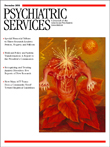This year we lost a pioneer in the search for better treatments for persons with schizophrenia. Over three decades, Gerard Hogarty, M.S.W., professor of psychiatry at the University of Pittsburgh, conducted a research crusade to enhance patients' lives. His creativity was unique, his science impeccable, and his enthusiasm infectious. His particular legacy was the invention and application of novel psychosocial treatments. His seminal studies provided proof that combining specific forms of psychosocial treatments with pharmacotherapy leads to better outcomes than monotherapies. Most incredibly, he did this repeatedly, like no one before or since.
In the 1970s Jerry and his collaborators designed a two-year outcome study of chlorpromazine and major role therapy (MRT), a combination of intensive social casework and vocational rehabilitation. They demonstrated the clear benefits of chlorpromazine in preventing relapse as well as a delayed-relapse benefit of MRT combined with medication. They also found deleterious effects of MRT among unmedicated or substantially symptomatic patients. This one study extended knowledge in two ways that are still valid today—the importance of maintenance medication in the outpatient treatment of psychosis and the disorganizing effect of psychosocial treatments prescribed for patients with psychoses in the absence of adjunctive biological supports.
In the 1980s Jerry and his colleagues produced another seminal study. They found one-year relapse rates of 41 percent for patients receiving medications only, 19 to 20 percent for those receiving medications plus either social skills training or family psychoeducation, and 0 percent for those receiving all three treatments combined. The clear message was that combined treatment is superior to monotherapy.
In the 1990s he turned to examining individualized psychosocial therapeutic techniques. He developed and tested a disorder-relevant, phased psychotherapy for schizophrenia, called personal therapy. The impressive results of this study, still unreplicated, found that combining this intensive psychosocial treatment with appropriate pharmacotherapy beat pharmacotherapy alone. His final foray into psychosocial interventions came in the development and testing of cognitive enhancement therapy, a group therapy that focuses on remediating neurocognitive and social-cognitive deficits. The promising early results of this approach are reported in this issue.
Jerry's legacy includes an unwavering focus on engaging tough challenges in order to improve the lives of patients, a bold willingness to ask and to answer difficult questions, and unflagging enthusiasm for following the evidence, even when the answers are surprising. He will be missed, but his contributions will endure as fundamental building blocks of contemporary and future treatments of schizophrenia.

